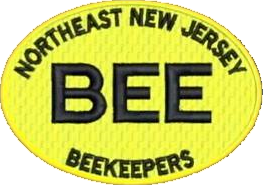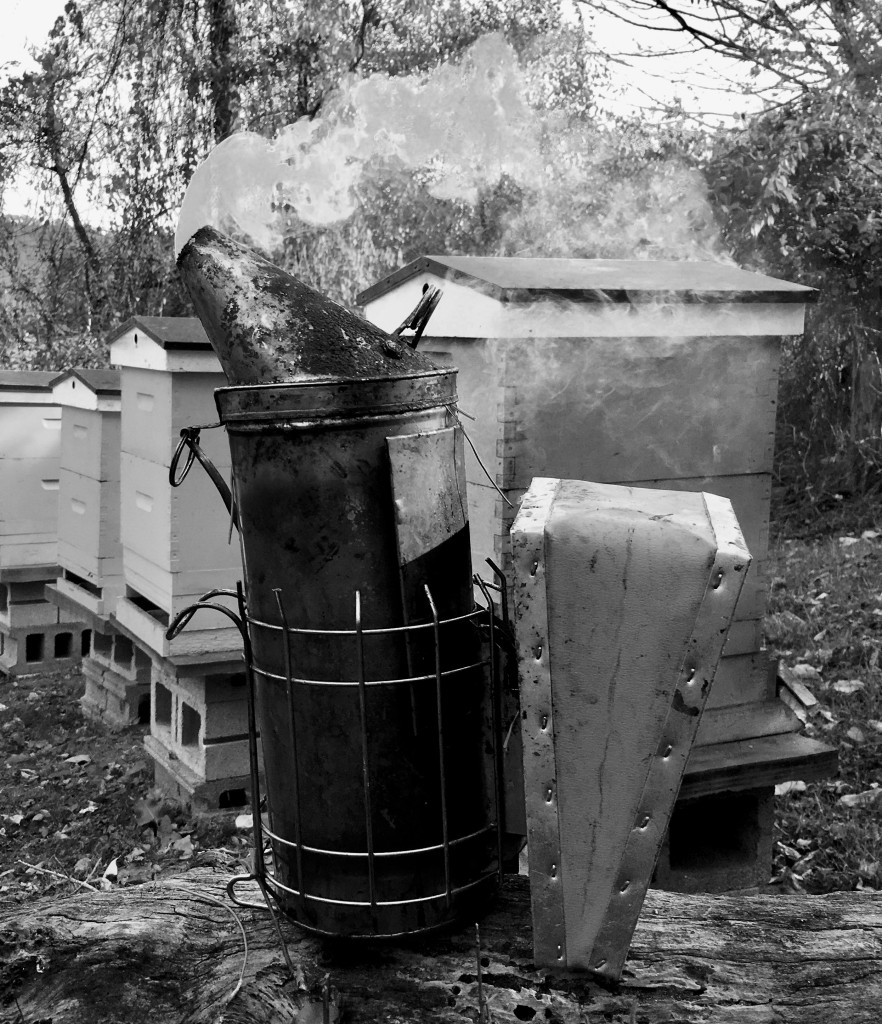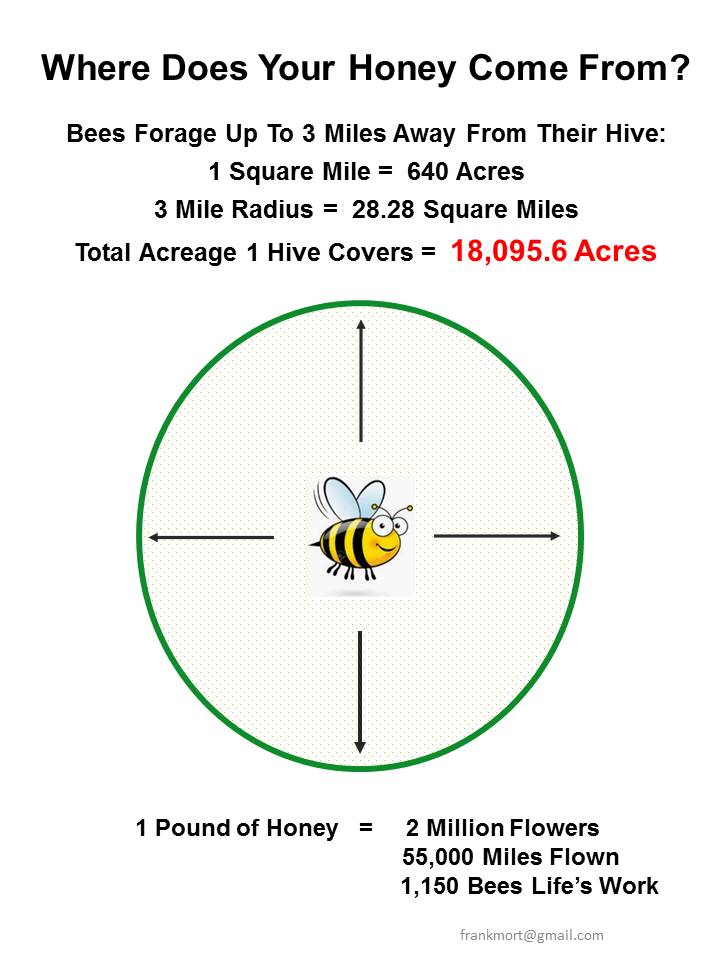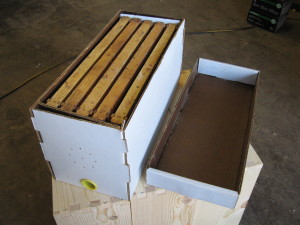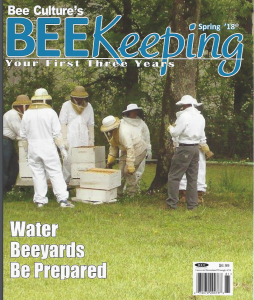Recent Posts
- Introducing a capped queen cell
The queenless split is made of frames of mostly capped brood and older larvae (4 days or older). Frames of young larvae and eggs should be avoided. If there are eggs and young larvae, the colony may begin rearing their own queen and not accept the queen cell. The queen cell needs to be kept warm in the new colony. Placing the queen cell on a frame of brood will help ensure the queen cell is kept warm and cared for along with the capped brood. The split needs a good population of bees to keep the brood and queen cell warm. Queen cells can be handled either just after capping or just before the queen emerges. Between 2 days after capping and 2 days before emergence, the queen is very susceptible to damage from handling and temperature changes; this is the metamorphic phase of the queen’s development. The queen must emerge from the cell, let her wing muscles develop and then go on her mating flight(s). The queen will typically start laying a week or two after emerging from the cell.
Checkout the demo video below
- Bear Fence
John A. Gaut, EAS Master Beekeeper
The materials are for an overall area of 16 feet by 16 feet, enough for up to 8 hives.The charger is the most expensive item. The total will be about $450.
You will need a post driver for the t-posts. (They should be driven 2′ into the ground The
wooded post should be set 3′ into the ground. )
Below are the materials I suggest for an electric bear fence. I have included the
Amazon links. You can purchase most items from Amazon or at Tractor Supply.1 – Magnum Solar-Pak 12 $300
https://www.amazon.com/Parmak-Impedance-Operated-Electric-
MAG12SP/dp/B00099FAJI/ref=sr_1_1?ie=UTF8&qid=1476748489&sr=8-
1&keywords=Magnum+Solar-Pak+121 – Complete Grounding Kit $30
https://www.amazon.com/Field-Guardian-Complete-Grounding-
Kit/dp/B00439QNU0/ref=sr_1_2?ie=UTF8&qid=1476748489&sr=8-
2&keywords=Magnum%2BSolar-Pak%2B12&th=1&psc=17 – 5′ heavy-duty 1-1/4” studded t-posts (Home Depot) $50
1 – 4″x4″x8′ pressure treated post (Home Depot) for the Solar Pak and gate handles $8
1 – T-360 Electric Fence T-Post Insulator – Black (25/pk) $19 https://www.amazon.com/Zareba-ITY-Z-Standard-Snug-fitting-
Insulator/dp/B005MNJOA2/ref=sr_1_13?ie=UTF8&qid=1477170075&sr=8-
13&keywords=zareba+insulator3 – Zareba GHPW-Z Plastic Gate Handle $8
https://www.amazon.com/gp/product/B0079GH858/ref=ox_sc_act_title_1?ie=UTF8&psc=1&smid=A3C59OKOW46DCY1 pack – Zareba WS3 3-Pack Electric Fence Warning Signs $8
https://www.amazon.com/Zareba-WS3-3-Pack-Electric-
Warning/dp/B00EQEY1UG/ref=sr_1_2?ie=UTF8&qid=1477170805&sr=8-
2&keywords=Electric+fence+sign2 packs of 2 (4 Total) – Zareba AWPA-Z Wood Post Gate Handle Anchor $12
https://www.amazon.com/Zareba-AWPA-Z-Wood-Handle-
Anchor/dp/B0079GH2JK/ref=sr_1_1?ie=UTF8&qid=1477170893&sr=8-
1&keywords=awpa-zPolywire is used because it is visible to animals (both dear and bear) at night and is
easily repaired. $18
https://www.amazon.com/Farmily-Portable-Electric-Polywire-
Conductors/dp/B074X9X6XQ/ref=sr_1_34?crid=37146EA9ISVRQ&keywords=polywire+
electric+fence&qid=1574429621&sprefix=polywire%2Caps%2C125&sr=8-34You will need a few short lengths of 12 Gauge insulated copper wire to make the
connections.You will also need some connectors for the wire.
The fence should be 16′ on each side with a post every 8′.
The 4×4 post should be on the corner at the entrance gate. The Solar Pack will be
mounted on the post with the solar panel facing South. The wire will run on the inside of
the posts. The steel tee posts should be driven so the studs are toward the inside. The
corner posts should be at a 45 degree angle with the studs toward the inside.
There will be 3 wires. The first should be 12″ above the ground, the second 24″ above
the ground and the third 36″ above the ground.This fence should deter the bears and is not too expensive. I use a similar design at
most of my yards. No bear problems there so far. Deer have ripped through the fence;
it was easily repaired.
I attached are pictures of the fences at two locations, one without hives and the other
with four hives.

- Northeast New Jersey Beekeeping 2022 Program
Coming Soon
- Water bottle bee
This hive has a clear inner cover without a top entrance. There is insulation above the inner cover that minimizes condensation. There were a few bees filling up with water! Dr. Seeley calls these “water bottle bees.” They will store water for the colony. The water is needed to dilute the honey and produce brood food. The water bottle bees would forage outside the hive if there was no condensate available in the hive, a much more dangerous option in the cold weather.While too much condensation is not good for a colony, a little condensation is beneficial. More heat is retained in the hive when there is no top entrance, resulting in less honey consumption.
Movie by John A. Gaut, January 2021 - Check Out Our Club Events Page For a Fun-Filled Fall of Beekeeping!
- As The Bee Flies
- April 15 Meeting – Installing your Nuc
Installing & Caring for your new Nucs will be the topic covered on April 15 at 7:30 p.m. Our seasoned beekeepers will be on hand to answer all your questions.
We will also cover swarm management.
For instructions which will be covered, download this pdf and bring to the meeting.
Our meetings are always the third Friday of every month, beginning at 7:30 pm. We meet at Ramapo College 505 Ramapo Valley Road Mahwah, NJ in the Anisfield School of Business, Room 135S.
- Nuc orders now ongoing!
The Club will once again be ordering nucs from our Nuc Guy, Grant Stiles. Nucs are $200 and will be treated with Apivar (in the Nuc when received) and will come in a beautiful wooden box this year. The box can be used for swarm catching or a swarm lure.
We expect delivery late April. All Nucs will need to be picked up the night of delivery. Please make arrangements if you cannot be there as all deposits will be forfeited if Nucs are not picked up.
Order today, as supplies are limited! You can place your order at a club meeting in Jan-March. - Bee prepared before asking for help
From Frank Mortimer in the January Bee Culture Magazine. Frank gives advice on the five things you need to know before calling on your mentor.
- Getting your colonies ready for winter
By John A. Gaut
Winter is coming and it’s time to ready the colonies for the cold months.
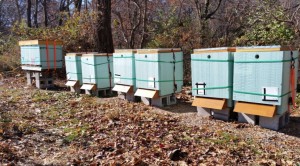
Winterization Checklist
Adequate Honey Stores, 60 pounds or more
Good pollen reserves, 4 + frames of mostly pollen
Large population of young healthy bees
Low Mite levels
Upper entrance
Reduced and mouse guarded bottom entrance
Minimize Air Infiltration
Close Bottom Board on Screened Bottoms
Tape any gaps in boxes
Insulate the top of the hive between between the inner cover and the outer cover
Insulate the hive sides
Click below to learn more about your bees and the winter months, and how to properly insulate the hives
